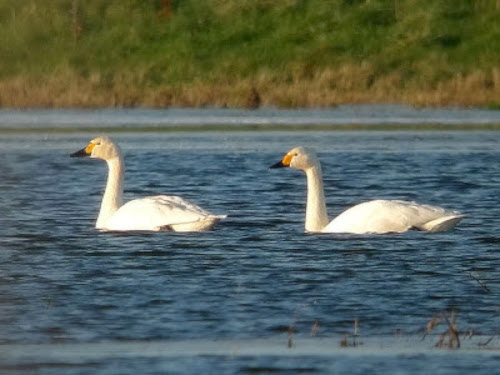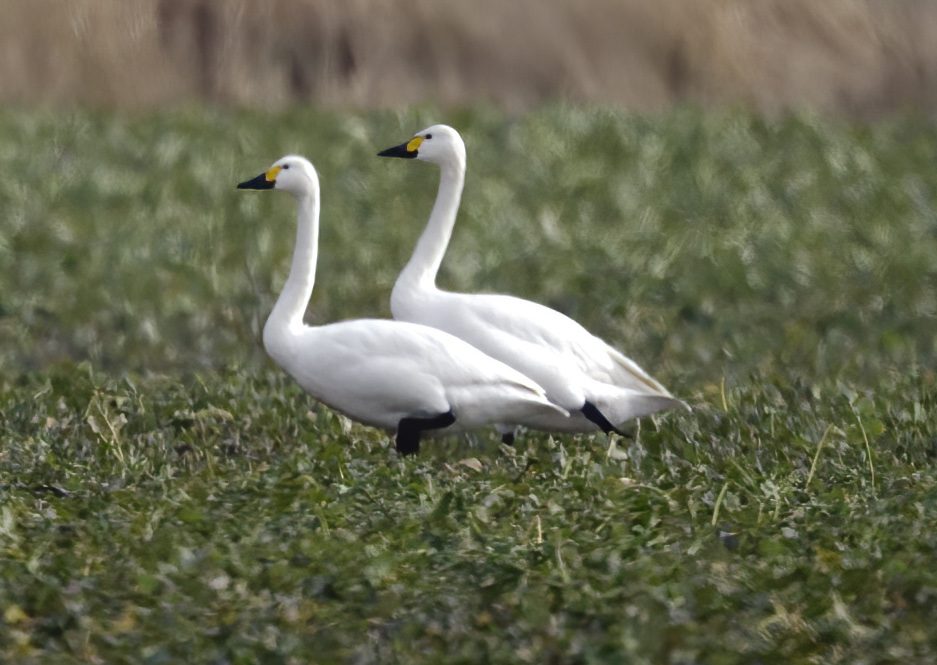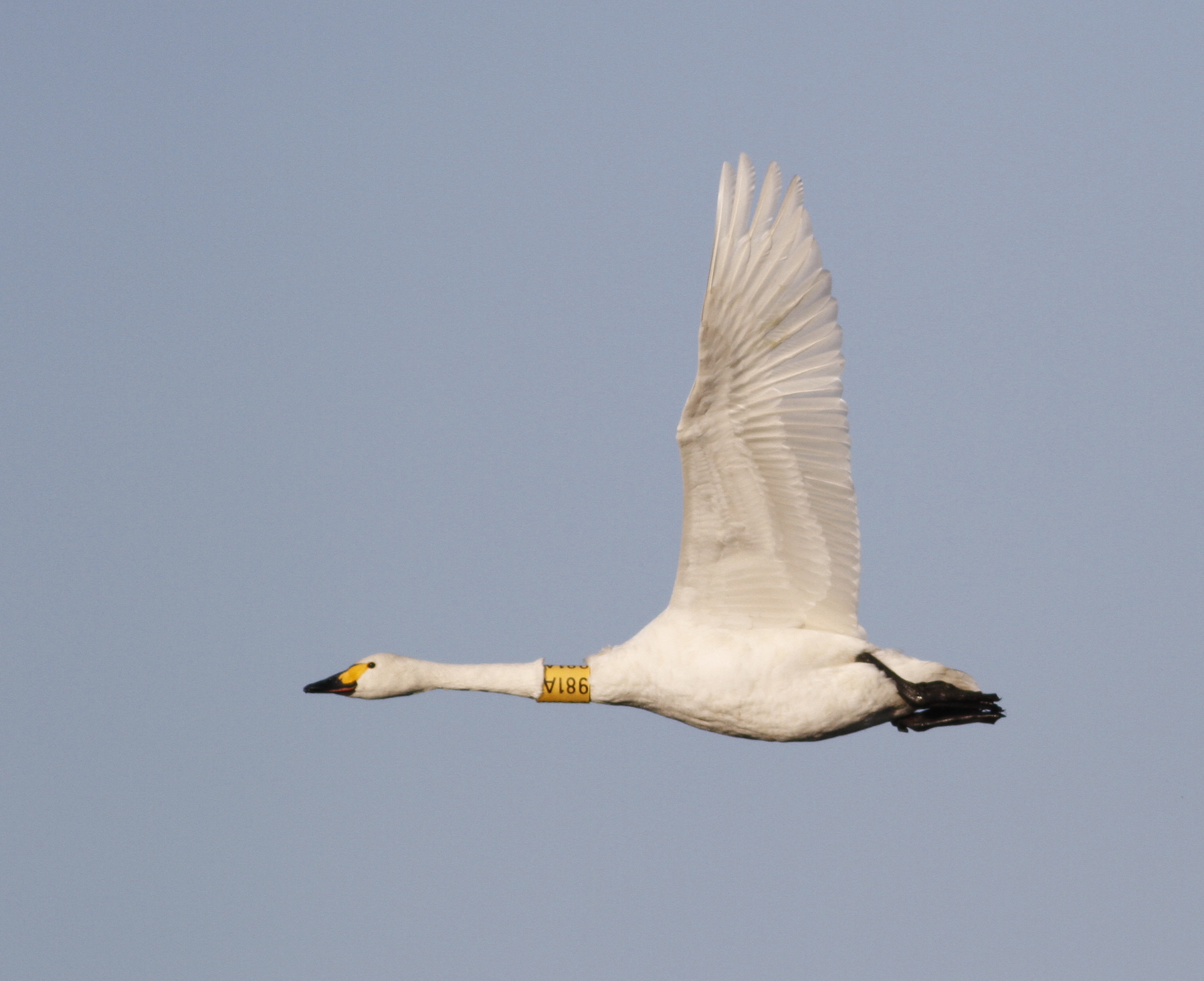Bewick's Swan Cygnus columbianus bewickii
Scarce passage migrant and very scarce winter visitor, mainly Octobe-March, exceptional in summer.


Bewick's Swans: left, Frampton Marsh January 1st 2010; centre, Worlaby Carrs February 2010 (Graham Catley)
right, Nocton Fen November 27th 2011 (Russell Hayes);
This species and Whistling Swan (see next account) are races of Tundra Swan, Cygnus columbianus, with Bewick’s Swan, C. c. bewickii, the familiar British representative. The 8th census of Bewick’s Swan in Britain in January 2015 yielded a total of 4,371 birds, which showed a decline of 38% compared to 2010. Over the longer term, the 10-year trend 2007/08 to 2017/18 from BTO WeBS data showed a 71% decrease. The Atlas notes that migrant flocks of 100 or more were seen in Lincolnshire in the 1980s and 1990s but in the last 10 years totals across the county reported in LBRs have rarely risen above 50. Small migrant flocks may be encountered almost anywhere in the Fens with some areas like Bardney-Branston Booths-Nocton Fen regularly holding a small wintering population consorting with the much more numerous Whooper Swan, Cygnus cygnus.
(Account as per new Birds of Lincolnshire (2021), included September 2022)

